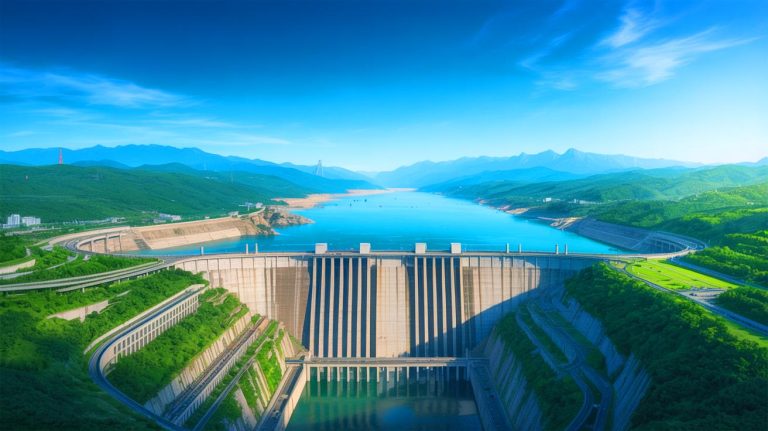| IN A NUTSHELL |
|
Humanity’s relentless pursuit of progress has led to remarkable advancements in infrastructure development. From towering skyscrapers to vast dams, our ability to alter the natural world is undeniable. However, with these grand constructions come unforeseen consequences that can extend beyond their immediate surroundings. According to NASA, human-made structures, alongside natural phenomena, can influence Earth’s rotation. This article delves into the profound implications of such changes, focusing on large-scale projects and their unexpected global repercussions.
Colossal Infrastructures and Their Unseen Impact
The world has witnessed an unprecedented rise in the construction of massive infrastructures that challenge the very laws of gravity and engineering. Iconic structures like the Burj Khalifa in Dubai, the Shanghai Tower, and The Clock Towers in Saudi Arabia exemplify this relentless quest for grandeur. Yet, beyond their breathtaking architecture, these edifices raise pertinent questions about their impact on our planet. Among these monumental constructions, the Three Gorges Dam in China stands out. As the largest hydroelectric dam in the world, located in the Hubei province, it symbolizes China’s ambition to harness its natural resources and assert its engineering prowess.
While its primary purpose is to generate electricity, the dam also serves as a testament to China’s efforts to manage its territorial challenges and internal dynamics. However, the implications of such a massive structure extend beyond its immediate utility. The sheer scale and mass of the dam have sparked discussions about its potential to influence Earth’s rotation, a topic explored in detail by researchers and scientists. The possibility of engineering feats impacting not just the local environment but also the planet as a whole prompts a reevaluation of our approaches to construction and development.
The Three Gorges Dam: A Giant with Global Consequences
In the realm of renewable energy, China leads the charge as the world’s foremost producer of hydroelectric power. The Three Gorges Dam, despite its impressive scale, only meets 3% of the country’s energy needs. However, its significance transcends energy production. A NASA report from 2005 posits that the dam could potentially affect Earth’s rotation. Such changes occur when any event involves a significant mass shift, be it an earthquake or a reservoir filling up.
Dr. Benjamin Fong Chao of NASA’s Goddard Space Flight Center elucidates that even seemingly negligible actions, like driving a car, can have a minute impact on our planet. The Three Gorges Dam, with its vast reservoir, exemplifies how human activities can unintentionally alter the Earth’s natural dynamics, prompting a reevaluation of our engineering endeavors and their far-reaching effects. This insight into the dam’s potential impact on global systems is a testament to the interconnectedness of human activity and natural processes.
The 0.06 Microsecond Effect
To comprehend the potential impact of the dam, consider an ice skater adjusting their rotation by repositioning their arms. Similarly, the 2004 earthquake shortened the day by 2.68 microseconds. If the Three Gorges Dam’s reservoir were filled to capacity, it would hold approximately 10.6 trillion gallons of water (40 cubic kilometers). This enormous water mass would increase the length of a day by 0.06 microseconds and slightly alter Earth’s shape, making it more rounded at the equator and flatter at the poles.
Such changes, though seemingly minuscule, underscore the intricate balance of our planet’s systems. The cumulative effect of numerous human activities could have significant implications for the Earth’s rotation, climate, and overall stability. As we continue to exploit natural resources on an unprecedented scale, understanding these nuances becomes increasingly critical. The subtle yet profound influence of large-scale projects on Earth’s natural rhythms highlights the need for careful consideration in future developments.
Looking Toward the Future
The influence of human constructions on our planet is a matter of growing concern. As we persist in building larger and heavier structures, it is crucial to comprehend the potential consequences. How will these changes impact our daily lives and environment in the long term? Infrastructures like the Three Gorges Dam serve as reminders of humanity’s immense influence on Earth. Ultimately, we must ask ourselves whether we are prepared to shoulder the responsibilities that accompany these technological advancements.
As we forge ahead with new developments, the question remains: how can we balance our quest for progress with the need to preserve the stability of our planet? This ongoing dialogue will shape the future of engineering and environmental stewardship. How do you envision the balance between advancement and sustainability being achieved in the coming decades?
Did you like it? 4.6/5 (30)







Wow, the Three Gorges Dam is affecting Earth’s rotation? That’s mind-blowing! 🌍